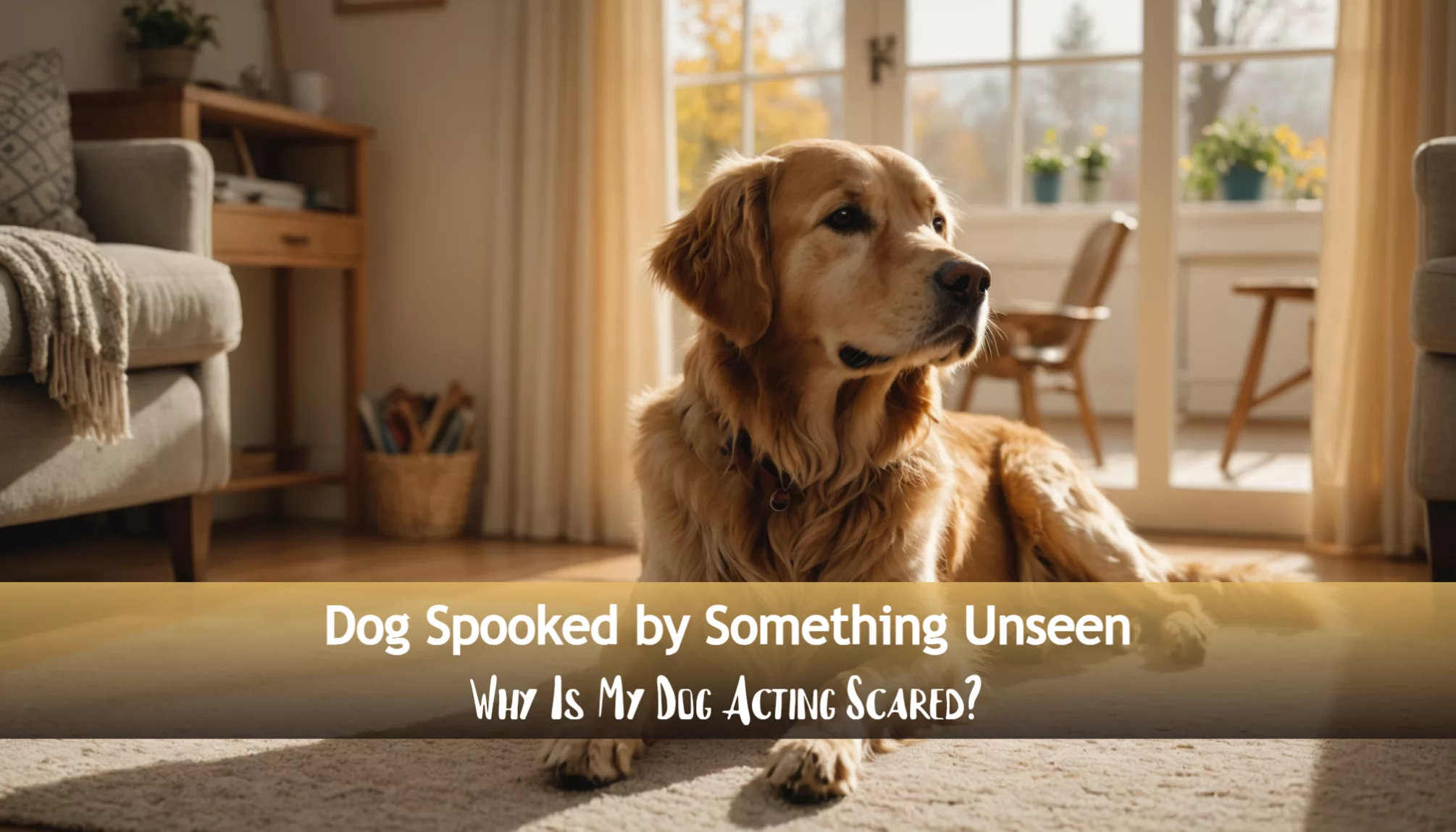Imagine coming home to find your furry friend cowering in a corner, trembling at something you can’t see. When your dog is spooked by something unseen, it can leave both of you feeling confused and worried. Just like careful aquarium owners monitor their fish’s behavior for signs of stress, understanding your dog’s fearful reactions, especially when spooked by something unseen, is crucial for their well-being and happiness.
Your dog’s heightened senses can pick up on things we humans might miss – from subtle changes in air pressure to high-frequency sounds. In this guide, we’ll explore the common triggers that cause sudden fear in dogs, learn to recognize the early warning signs of anxiety, and discover proven techniques to help your pet feel safe again. Whether your dog is showing mild nervousness or intense fear reactions, you’ll find practical solutions to create a more confident and relaxed companion.
Understanding Why Your Dog Is Acting Scared
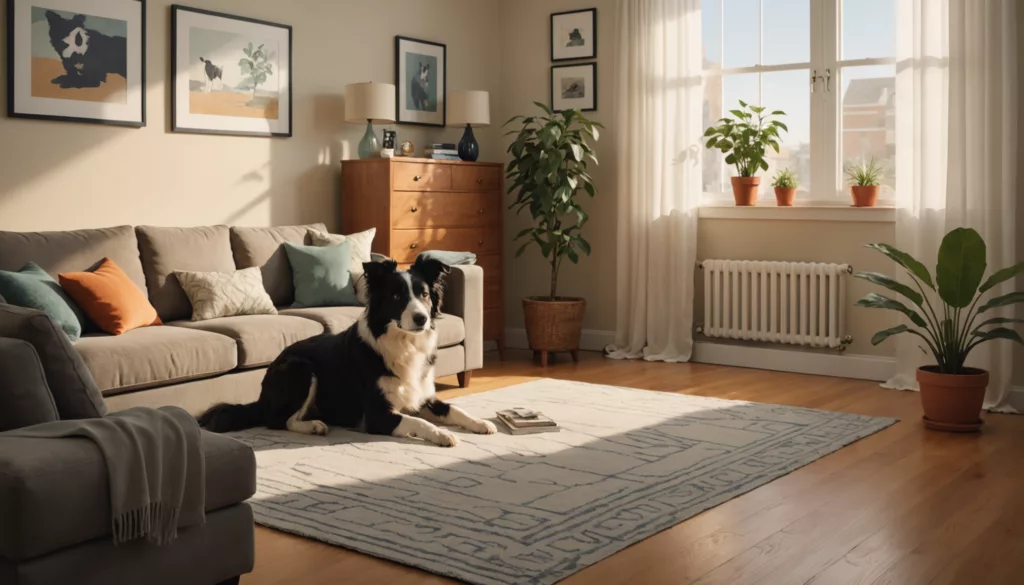
Dogs sometimes show sudden fear and appear spooked by something unseen. This reaction may happen because they detect noises, scents, or subtle changes you can’t tell exist. Their powerful senses often pick up high-frequency sounds or shifts in air pressure that trigger unusual anxiety, leading them to feel spooked by something unseen.
Common Reasons for Fear in Dogs
Your dog may sense low-range vibrations from thunderstorm activity or firework displays that you don’t hear. Ultrasonic sounds—even from everyday electronics—could be causing stress in a vulnerable pet. Barometric changes also feel intense to a dog experiencing a survival instinct.
Signs of Fearful Behavior in Dogs
Signs often include trembling, a tucked tail, or dilated pupils. Sometimes, a dog may start panting or hide under furniture when it’s afraid. Abnormal fear reactions like persistent shaking or avoidance behaviors point to elevated stress levels. (ScienceDirect, MDPI Animals)
When to Consult a Vet for Medical Conditions
A sudden onset of anxiety in your furry friend may suggest an underlying illness or pain. Age-related conditions like vision changes can cause unusual startle responses, leading your dog to feel unsafe in normal situations. Neurological disorders sometimes amplify the fear response, so it’s best to call a veterinary professional if symptoms persist. (PubMed, American Veterinary Medical Association)
The Role of Past Experiences in Fear Development
Negative experiences at 4-6 months or 8-12 months can create long-term fear in dogs. Abuse or harsh training methods may lead a dog to react nervously to another object or person. Early socialization and positive handling often prevent future fear episodes, which helps your dog remain calmer around loud noises or new environments.
Dog Spooked by Something Unseen: Recognizing the Signs
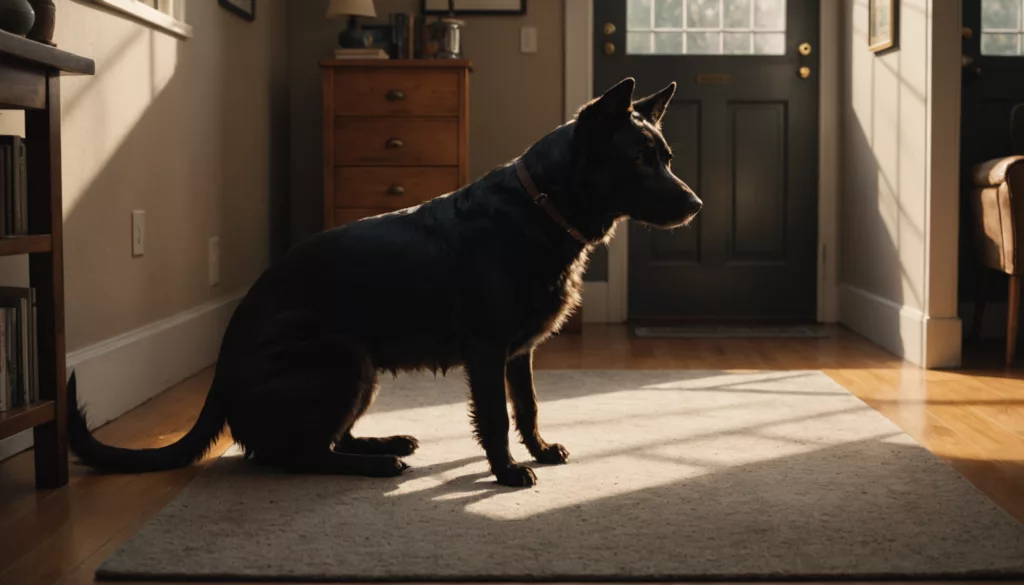
When you notice a sudden change in your dog’s body language or behavior, it might point to a dog spooked by something unseen. These responses aren’t always clear, so it helps to examine normal stress responses and see if fear in dogs include trembling, hiding, or refusing to move.
How to Identify Signs of Fear in Dogs
Dogs often display obvious signs when startled by unusual triggers:
• Tucked tail between legs and flattened ears
• Dilated pupils with wide eyes
• Shaking or trembling
• Crouching behind furniture or pacing
• Panting when temperatures are normal
According to ASPCA, these behaviors could indicate an anxiety disorder or sudden fear response.
The Impact of Environment on Fearful Behavior
Your dog may show anxiety in different locations. Air pressure shifts during a thunderstorm or weird noises from electronics can startle any animal. Shadows, reflections, and high-frequency noise also raise stress levels.
| Location | Common Triggers | Impact Level |
|---|---|---|
| Indoor | Electronics, reflections | Moderate |
| Outdoor | Weather changes, strange sounds | High |
| New Places | Unfamiliar scents, surfaces | Very High |
Why Puppies May Also Exhibit Fearful Behavior
Puppies face important stages between 8-12 weeks and 6-14 months. During these fear periods, they feel vulnerable and may start to shake, hide, or cry at sudden changes. Proper socialization can help prevent future fear episodes.
Common Triggers and Their Effects
Environmental and situational triggers often cause a dog to show unusual signs or aggression. Loud noises, unfamiliar objects, or another strange smell can frighten even a stable pet. Potential triggers include:
• Thunderstorms or firework displays
• New items with strong scents
• Surfaces like slippery floors
• Sudden changes in lighting or background noise
Recognizing these factors allows you to figure out the best way to help your furry friend feel safer.
Helping Your Dog Overcome Fear and Anxiety
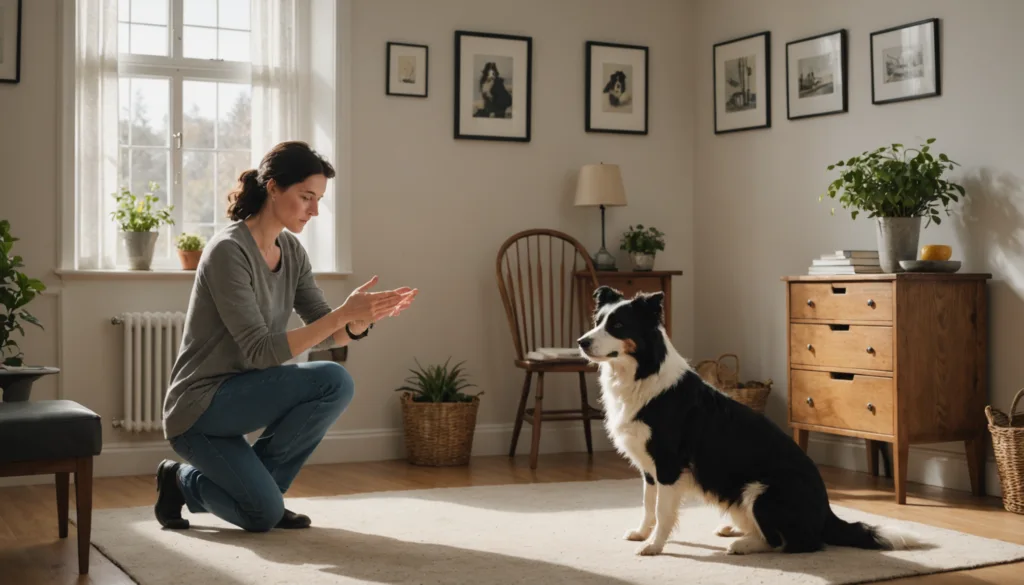
Your dog may sometimes act afraid or anxious when faced with loud noises or unusual changes. If you see them spooked by something unseen, you’ll want to learn what could be causing this response. Anxiety in dogs often stems from past experiences or sudden surprises in their environment. By understanding these triggers, you help your pet feel safer and more confident.
Expert Recommendations for Fearful Dogs
Veterinary experts suggest focusing on counter-conditioning (pairing scary things with treats) and desensitization (gradual exposure). Counter-conditioning builds positive links between frightening objects and fun rewards. You aren’t punishing fear; instead, you show that calm behavior brings treats or praise. Consistent routines also ease tension and support a normal daily rhythm.
Training Techniques to Address Dog Acting Scared
Effective training starts with gradual exposure at a safe distance. If your dog may suddenly tremble at a thunderstorm, begin with low-volume storm recordings paired with treats. Keep sessions short and watch your pet’s body language for signs of stress. Move closer only when you don’t see fear reactions like shaking or drooling.
Professional Help: When to Seek a Dog Trainer or Vet
Sometimes, fear goes beyond typical stress levels. If your dog’s fears last longer than four to six weeks or aggression appears, it’s best to call a veterinarian. They’ll check for any health issue, such as pain or illness, that might cause anxiety. If no medical concern is found, you’ll benefit from guidance by a certified animal behaviorist.
Creating a Positive Training Environment
A peaceful setting helps a dog spooked by something unseen relax. Provide a dedicated safe zone with soft bedding, toys, and calming background noise. Block or reduce startling triggers when possible, and keep household routines predictable. With steady practice, you create a secure space where your dog feels ready to learn and grow.
The Science Behind Dog Behavior and Fear

How Fear Develops in Dogs Over Time
You may notice fear developing in your pet at a young age. During the critical socialization window between 4-14 weeks, puppies form lasting impressions that affect how they respond to noise, unfamiliar objects, and other triggers. Genetic factors also play a major role and can combine with negative experiences or a lack of socialization to create sudden fear. Some dogs learn fearful behavior from others, leading to more complex anxiety issues over time.
Current Research on Canine Anxiety and Fear
You’ll find that modern studies show increased amygdala activity in frightened dogs, reflecting the brain’s core fear-response center. Chronic anxiety in dogs can cause lasting changes in brain chemistry and abnormal fear reactions. Early intervention often leads to the best outcomes, especially if you address stress levels before they escalate. Positive experiences and reinforcement training have proven effective for reducing anxious behavior, even if your furry friend seems spooked by something unseen.
Myths About Dogs Acting Scared and Fear
It’s common to think dogs simply “grow out” of fear, but that often isn’t the case. Punishment may seem like a quick fix, yet it raises anxiety levels. Ignoring sudden fear can’t tell your pet that everything is normal. Animals can develop fears of harmless objects, so you’ll want to observe behavior changes and consider gentle guidance instead.
| Myth | Reality |
|---|---|
| Dogs grow out of fear | Fears may worsen without proper help |
| Punishment helps fear | It heightens anxiety and aggression |
| Ignoring fear works | Dogs need active management and care |
| All fears are rational | Some frighten dogs even when there’s no real danger |
Neurological Aspects of Canine Fear Response
When your dog may feel threatened, the body triggers a survival instinct involving cortisol release and an increased heart rate. This heightened awareness helps dogs respond fast, whether the cause is real or an inanimate object. Abnormal brain activity in certain cases can make your dog spooked by something unseen, such as weird noises or changes in air pressure. These responses evolved from fight-or-flight behaviors and can sometimes appear sudden or unexplained.
Long-Term Solutions for a Fearful Dog
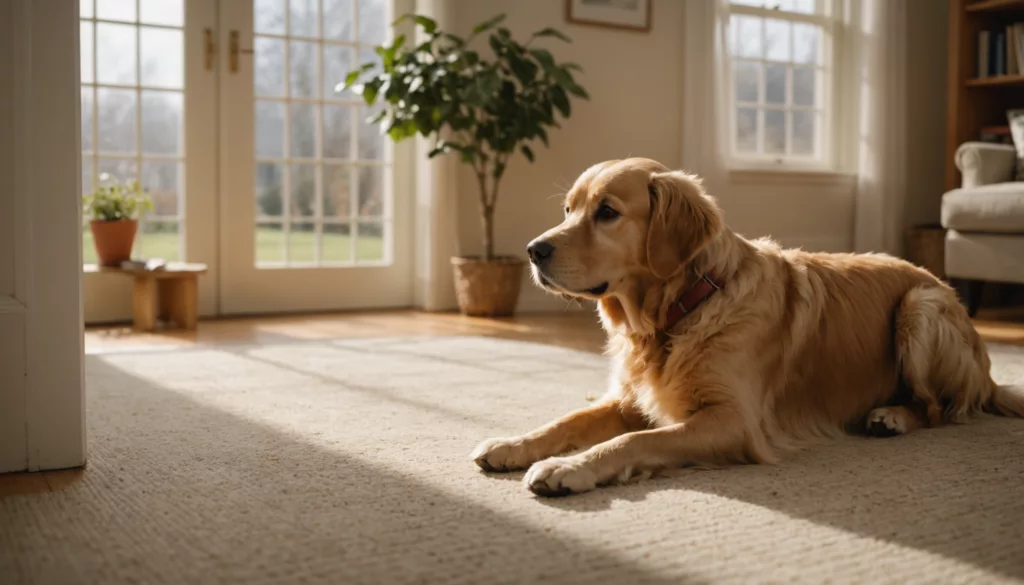
Is your dog spooked by something unseen, leaving you unsure what could be causing that sudden fear? Experts report that mixing gentle behavioral conditioning with a safe home environment often reduces anxiety within 4-6 months. You’ll see steadier progress if you focus on consistent steps and regular monitoring.
Behavioral Conditioning for Dogs Acting Scared
Behavioral conditioning replaces your dog’s negative reactions with positive experiences. Studies show an 85% success rate when you combine desensitization and counter-conditioning over a 3-6 month period.
Begin with mild versions of triggers, such as low-volume loud noises, and offer treats or praise when your pet stays calm. Increase exposure gradually, and keep sessions around 5-15 minutes. Track intensity changes to see when your dog may start adapting.
| Week | Training Focus | Expected Progress |
|---|---|---|
| 1-2 | Distance work | Dog notices trigger without panic |
| 3-4 | Closer interaction | Brief calm moments near the cause |
| 5-8 | Direct involvement | Reduced fear and better body language |
Creating a Safe Space for Your Dog at Home
A designated safe zone can lower stress hormones by up to 50%. Choose a quiet corner of the house and set up soft bedding or a covered crate to give your pet a sense of security. If your dog spooked by something unseen seeks shelter, make sure this space stays peaceful and calm.
Position multiple safe areas throughout your home so your dog has options when unusual noises or changes occur.
Monitoring Your Dog’s Progress Over Time
Observation reveals if training works. Jot down each trigger—like thunderstorm or firework—and note how serious the reaction is. Use a simple log to record pacing, panting, or improved behavior after short recovery periods. Changes in appetite or willingness to explore often signal lower stress levels.
Maintaining Consistent Progress
Environmental stability boosts success rates by up to 60%. Aim for a regular routine with clear rules and calm reinforcement instead of punishment. If you notice your dog spooked by something unseen again, return to early training steps until the fear subsides. Monthly check-ins, gradual exposure to new events, and consistent praise help your pet maintain confidence.
Prevention and Management Strategies
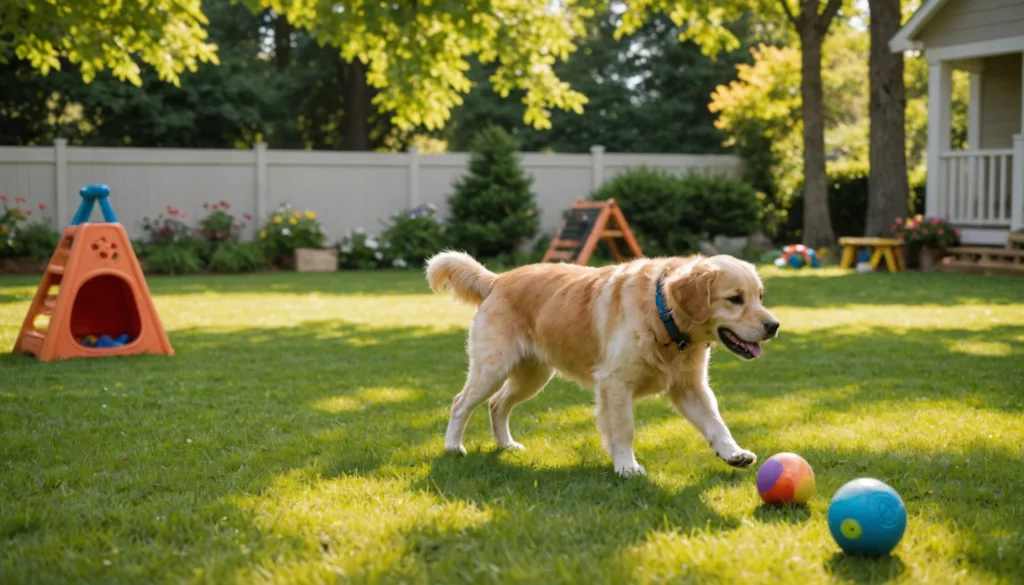
Prevention and management of a dog spooked by something unseen involves a balanced plan that addresses social experiences, home setup, and playful training. You may see sudden fear in your pet when loud noises or unusual triggers appear. Focus on safe introductions, thoughtful changes at home, and interactive play to build confidence.
Early Socialization Techniques
You set the stage for lifelong security when you socialize your puppy between 3 and 16 weeks of age. Short, positive sessions (5–10 minutes) help your dog learn about new surfaces, sounds, and people. Offer small treats and praise whenever calm behavior appears. Gradual introductions prevent high stress levels and shape how your puppy handles unusual events.
• Expose your puppy to different textures and objects (e.g., gentle noises, friendly people)
• Reward calm reactions right away
• End on a positive note if you see any sign of fear
Environmental Modifications
Create a calmer house so your dog may feel safe. White noise machines hide sudden sounds and reduce startle responses. Dedicated safe zones with cozy bedding allow your dog to rest without feeling vulnerable. Consistent lighting and covered mirrors minimize shadows that could be causing fear.
| Modification | Purpose | Benefit |
|---|---|---|
| White noise | Masks frequency noise | Lowers sudden fear reactions |
| Safe space | Provides security | Lets your dog retreat instead of feeling cornered |
| Steady lighting | Reduces shadows | Fewer visual triggers for anxiety in dogs |
| Clear pathways | Eases movement | Helps your dog navigate the house with more confidence |
Building Confidence Through Play
Engaging games and training create trust and reduce destructive behaviors. Nose work exercises prompt your dog to use its sense of smell in a fun way. You can also try simple obedience drills with treats, puzzle toys for mental stimulation, or interactive games to maintain interest.
• Allow gentle sniffing activities with hidden treats
• Use upbeat commands and immediate praise
• Keep sessions short and rewarding
Progress often starts within a few weeks of consistent practice. By mixing socialization, a calm environment, and structured play, you encourage normal stress responses and support a happier, braver companion.
Conclusion
Understanding why your dog gets spooked by unseen things is the first step toward helping your furry friend feel safe and confident. Through patient observation and consistent training, you can identify your dog’s fear triggers and create a supportive environment that helps them overcome their anxieties. Remember that every dog’s journey to confidence is unique, and it’s okay to take small steps forward.
Working with your dog to address their fears will not only strengthen your bond but also lead to a happier, more relaxed pet. Whether you’re dealing with sudden fear reactions or ongoing anxiety, the right combination of training techniques, environmental modifications, and professional help when needed can make a remarkable difference. Keep celebrating your dog’s progress, no matter how small, and stay committed to helping them build their courage day by day.
FAQs
1. Why do dogs suddenly act scared for no apparent reason?
Your dog may detect high-frequency noise or subtle vibrations that you can’t tell are there. Sometimes, a thunderstorm or another unusual situation triggers sudden fear. Negative experiences also start long-lasting fear responses and could be causing your dog to shake, hide, or show aggression.
2. What are the most common signs of fear in dogs?
Fear in dogs includes trembling, dilated pupils, body postures that seem lower than normal, and attempts to escape. You’ll often notice your furry friend drooling or panting more than usual, which can indicate anxiety in dogs. These common signs may happen any time your dog is spooked by something unseen.
3. How can you help a fearful dog?
Always include an area that feels safe and calm, far from loud noises or background noise. Follow a regular routine to reduce sudden fear and build your dog’s sense of security. Positive experiences, such as gentle training sessions or interactive games, can lessen anxiety over time. Gradual exposure to scary objects helps dogs learn that these triggers aren’t a threat.
4. Can fear behaviors be prevented?
Early socialization around 4-6 months or 8-12 months of age is best. Introduce your pet to a variety of reasons to explore new places and sounds. Reinforce normal behavior with rewards so your dog feels confident in different situations. Even simple steps, like letting your dog observe unusual signs from a safe distance, reduce long-term anxiety issues.

